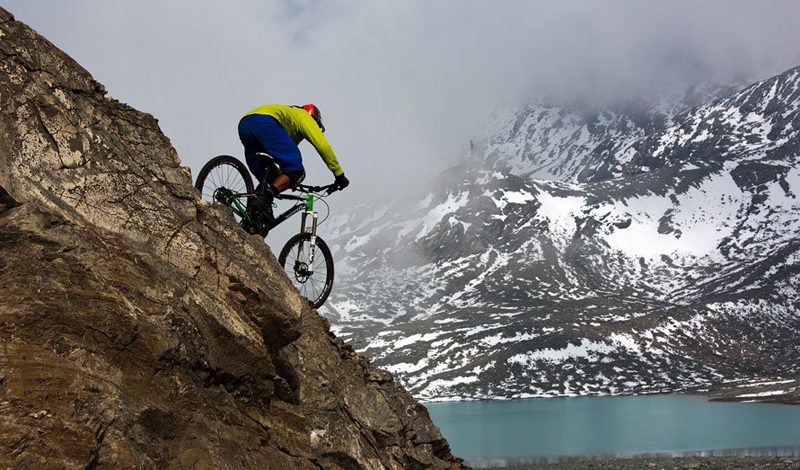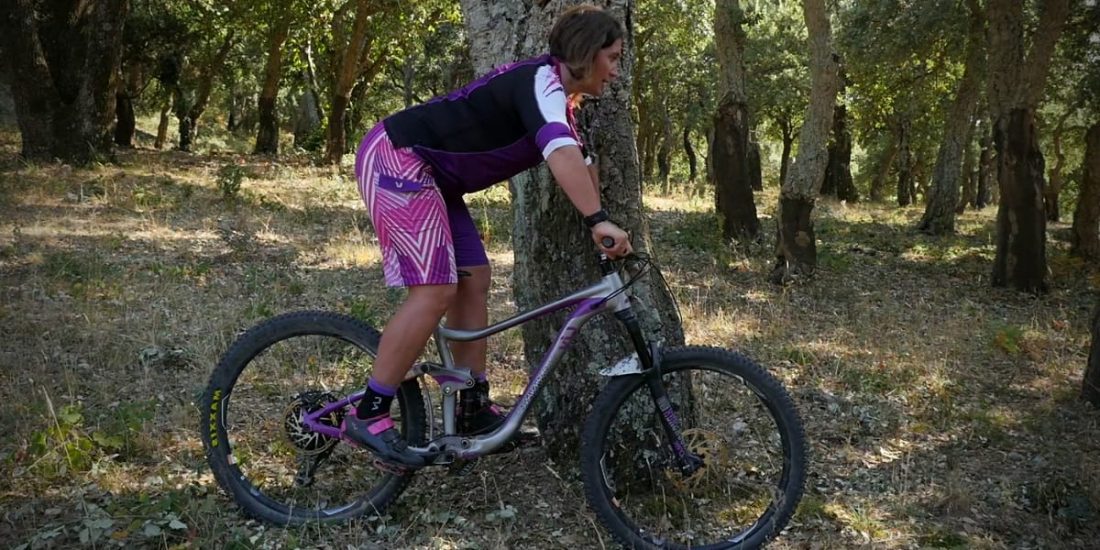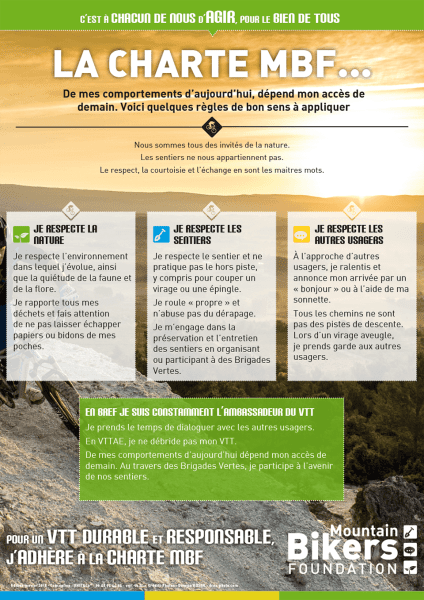
7 essential skills for a beginner mountain biker
Content
Do you know what the main challenge of mountain biking is?
No, not a drop, no. And not endurance. No, it's ego.
Mountain biking is like riding a bike, but it's a different practice. And that's all, it can be learned. Except that before training we watch YouTube videos about those who like to drive, and once in the saddle we imagine we are doing the same. That's where the ego hits! It hurts... So we put our pride in our pocket and start with the basics.
Have you been skating for a long time? Do not play with those who are not concerned! In all your persuasiveness, you are going to convince a friend to mountain bike and ride together because it will be really cool and you will see. And then you have to give your budding friend the basics, always with tact and diplomacy. Question ... once again about pride.
Here are 7 essential skills (non-negotiable) before you hit the road.
1. Front brake and rear brake
Putting someone on an ATV without explaining what front and rear brakes do and how to use them is like breaking a match in a dynamite warehouse. It may not happen, or it will become a big problem.
Here are the basics:
- Front brake on the left handlebar
- Rear brake right
Generally speaking, the front brake is used to stop and control the braking power (i.e. the speed at which you can stop), while the rear brake only helps to slow down and control the speed.
The brakes are always applied at the same time, except when cornering where only the rear brake should be used. Only one finger (index finger) should be used for braking, and when you press on the lever (s), do it flexibly and carefully: that is, do not push or jerk the lever, but rather gently and firmly before loosened again and then release the brake. After that, you can always try sudden braking to see what it looks like, but prepare to land. This is a friend's advice 😊.

2. Pilot seat
The pilot position is used whenever you walk the trail.
This is the starting position for technical descents over the terrain, overcoming obstacles such as stones, roots.
To be in the pilot's position, you must evenly distribute your weight on each leg:
- knees bent and extended;
- the buttocks are raised (and no longer sit in the saddle);
- the torso is down;
- elbows bent and extended;
- indicator on the brakes;
- the gaze rose high and swept a few meters in front of the bike.
The pilot's posture is flexible and relaxed. By keeping your knees bent and your elbows extended, you allow your body to be the suspension that can absorb the bumps in the terrain while maintaining stability. You will move from a ready high position (a little more relaxed) to a ready low position (more aggressive) as the terrain gets more and more technical.

DO NOT be in the lower (aggressive) position 100% of the time, because ... a quadrangular burn! Basically, you will find yourself in a position of simultaneous squats and push-ups, and you will get fatigued. So for the aggressive side, we'll be back ... If you're going down a gentle and non-technical downhill, get into a ready high position a little (your glutes are still not in the saddle). If you are riding on level, smooth terrain, relax in a neutral sitting position (you don't need to hurt yourself).
3. Safely stopping and exiting the bike.
When you start skating, if you see an obstacle such as a boulder, roots, a steep climb, and do not feel comfortable overcoming them, this is normal! Just make sure you know how to stop and get off the bike without falling or getting hurt.
When descending, always place your foot on the front side to avoid falling downstream when the bike runs over you.
Apply the brakes and look up at the same time. The key here is to LOOK in the direction you want to stop.
the bike and the body follow your gaze.
If you look at a cliff or a tree, you will fall from the side of the cliff or into a tree.
Instead, look up to where you are going to put your foot. When you stop, place your foot in a very stable triangle (2 wheels and 1 well-placed foot) on the ground.
After you have safely come to a stop in triangle mode, tilt the bike, pinch your other leg on the saddle, and stand next to the bike.
4. Lower the saddle on descents.
This is a very simple rule and a golden rule. We do not sit still downhill. Raise the buttocks of the saddle and stand with flat pedals (flush with your takeoff foot in front).
Why ? Because sitting in the saddle, you lose control and fall.
You should have an even weight in your feet and bent knees, and your lower body should be relaxed and relaxed. Does this remind you of something? This is the pilot's position! When you are in this position, you allow the bike to move easily with you, and your legs act as shock absorbers.
If you have a drip, use it and lower the saddle when descending. This will give you more options to leave the mobile bike under your body and make it easier for you to tackle technical details.
5. Keep track of where you are going
Keep an eye on where you want to go instead of looking directly at the ground right in front of your tire or looking at something you don't want to bump into.
Never underestimate the power of looking where you want to go!
If you are having trouble passing a pin or sharp turn, take the time to determine where you are looking. Move your gaze so as not to look at the turn and go further along the trail. This should help you a lot.

6. Find a balance
When mountain biking, your weight should be on your feet, not your arms.
It can be tricky to pinpoint exactly where your weight should be at any given time on the bike, because to be honest, it's constantly changing with small micro-adjustments here and there. Generally speaking, your weight shifts forward when you sit down, and when you descend, you lower your weight (heavy legs) and slightly backward (no fixation on the back of the bike!).
7. Rent of mountain bikers.
A good rule of thumb is to be polite and respectful of nature, trails, and more.
But also:
People going uphill have priority right of way. It doesn't matter if you are an experienced biker or a beginner.
Pedestrians and drivers have priority right of way. Always stop to allow pedestrians to pass, or if there is no problem with the crossing, slow down and do not frighten them. If you come across a horse on the trail, stop your bike calmly.
Listen to you and objectively look at your level. Don't put yourself in a difficult situation just to keep up with the group. Getting off the bike and avoiding a difficult transition is normal, it is even a sign of intelligence.
If you get off the ATV, move to the safe side as quickly as possible to allow anyone who continues to roll behind you or who is on the same level to get past an obstacle you choose not to overcome.
Travel the open trails and follow the rules! Never ride closed or prohibited trails and respect the hunter's signs (your safety is also at risk).
